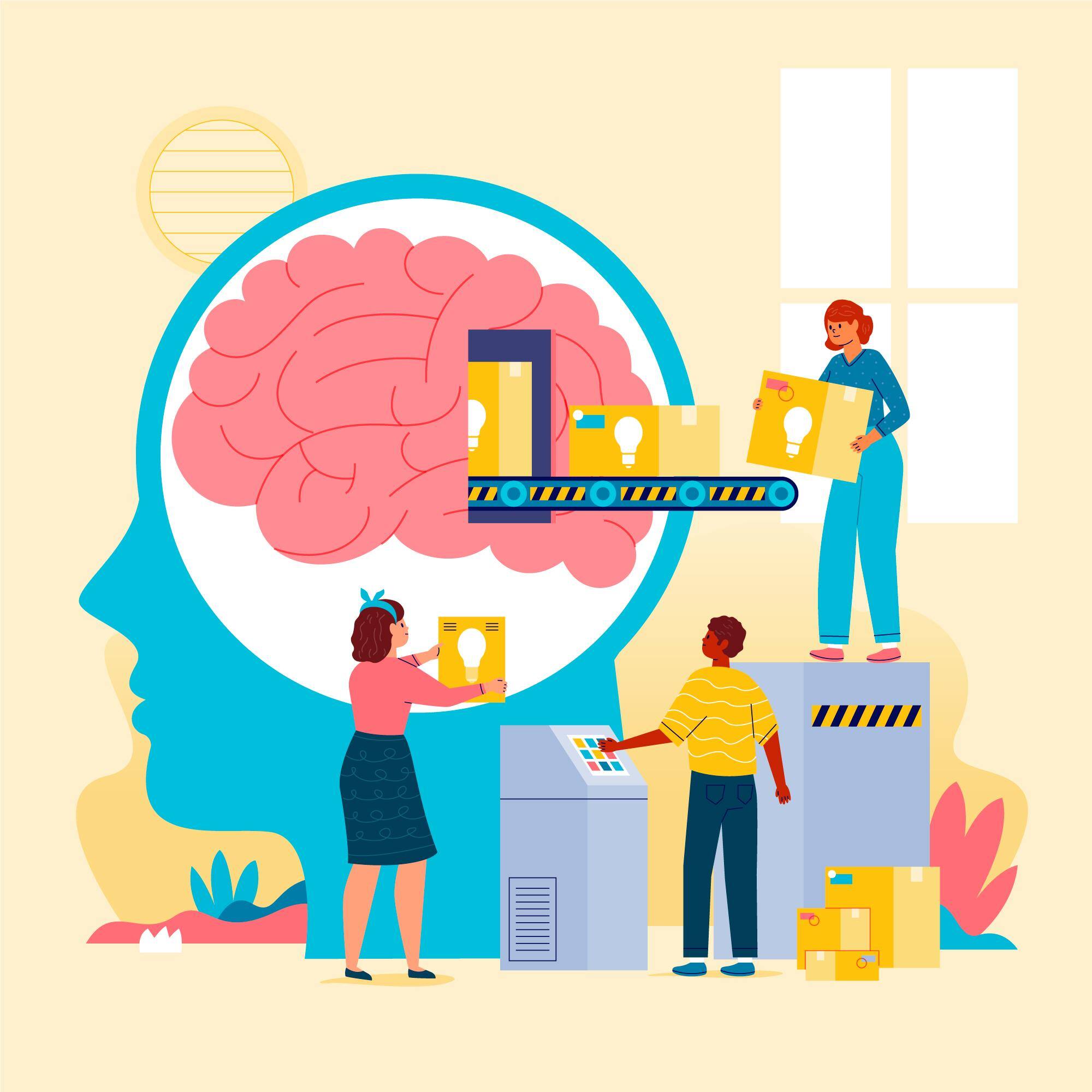When training your employees, understanding how our brains process and store information is a crucial step. A key concept that organisations must grasp is cognitive load, the mental effort required to absorb and retain new information. By effectively managing cognitive load, we can enhance training and thus make employees more efficient.
What is Cognitive Load?
Let’s understand this with a simple example: Imagine your mind as a funnel. Sensory information pours in, but only a small portion filters through to working memory—the part of your brain responsible for temporarily holding and manipulating information. Unfortunately, this working memory has its limitations; it can only hold about three to four pieces of information at a time, and even that for just a few seconds unless actively rehearsed.
This limitation is often misunderstood. It's not about individual capacity but rather the inherent design of our cognitive architecture. The challenge for learning is to move information from this narrow working memory funnel into the expansive landscape of long-term memory, where it can be stored forever.
Common Challenges faced in Training
Cognitive Overload:
As simple as it sounds, if too much information is pushed through at once, or if the information is poorly structured and it may overwhelm the learner. This can hinder the transfer of knowledge to long-term memory, rendering the training ineffective.
Limited Working Memory Capacity:
Working memory, the part of our brain responsible for holding and manipulating information temporarily has limited capacity , that is around three to four pieces of information at a time. This limitation can make it difficult for learners to process and retain complex or information-heavy content.
Inefficient Learning Designs:
Poorly designed learning materials, such as cluttered interfaces, confusing navigation, or irrelevant content, can increase cognitive load unnecessarily. Inefficient design can also lead to redundancy, where learners are bombarded with the same information repeatedly in ways that do not aid retention
Transfer to Long-Term Memory:
Successfully transferring information from working memory to long-term memory requires meaningful connections, repetition, and relevance. Without these, information may be quickly lost or might be difficult to retrieve later
How to conquer the challenges
Follow these strategies that helps in reducing cognitive load and aids in connecting new information to existing knowledge, facilitating a smoother transition to long-term memory-
1) Reducing Cognitive Load:
The answer lies in careful designing and structuring of the content. By minimizing extraneous information that doesn’t directly contribute to the learning objective, you reduce unnecessary strain on working memory. Additionally, a well-designed user interface that avoids complexity helps learners focus on what truly matters.
2) Chunking information:
Chunking involves breaking down complex information into smaller, more manageable pieces, making it easier for the brain to process. For example, instead of overwhelming learners with a long, detailed explanation, split the information into digestible sections, each focused on a single concept. To enforce a step by step guide to microlearning with help of AI powered learning visit check out what we have to offer at 5mins.ai
3) Designing for Long-Term Retention:
The ultimate goal in learning is to ensure that the information is not only understood but retained. This requires creating a learning experience that minimizes cognitive load while maximizing engagement and relevance. By focusing on clarity, simplicity, and relevance, you can create training programs that are not only effective but also memorable.
4) Spaced Repetition:
Reinforce learning through spaced repetition, where content is revisited at intervals over time. This technique helps move information from short-term to long-term memory.
Example: Include periodic quizzes or flashcards that revisit key concepts from previous lessons, spaced out over days or weeks.
5) Use Scaffolding:
Provide support structures that gradually increase in complexity as the learner becomes more competent. Start with foundational concepts and build upon them step by step.
Example: Introduce basic concepts in a new software system before moving on to advanced features. Use tutorials, guided practice, and examples that become progressively more challenging.
For this a gradual increase in the level of complexity is the key along with assessment scores that keeps you updated at your skill level and helps you elevate in the direction where you need more upscaling.
Check out what our partners at Learning to Thrive have to say on cognitive load and memory.
5Mins.ai is the worlds leading bite-sized learning platform that is designed to improve knowledge retention by over 50% while reducing time needed for training by 60 - 80%.
Book a free trial today to explore the platform.
.png)



